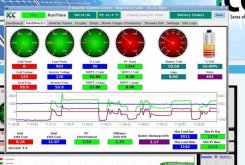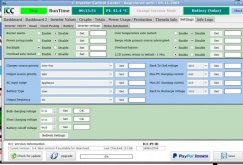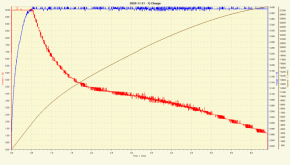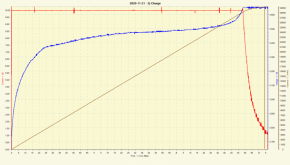One other point . Like most chargers on the market today these things are made for lead acid and fudged to supposedly suit LFP.
They do not . LFP has no place or need of "absorption". It is Constant Current/Constant Voltage if you can get it then shut off when 3.4v is reached and you are done . If you have Constant Voltage set to 3.65v then the current will taper off as the plate voltage comes up to 3.4v and the current will be under 0.1C at that point. Just switch it off if you can.
Better to balance down below 3 volts when you know each cell is in the last 10% of its capacity. Its too easy to get it wrong and do damage top balancing.
I have a recent MPP HV2-5048 and it still has the same charging profile deficiency . maybe one day they might fix it or someone here design a fix for LFP.
They do not . LFP has no place or need of "absorption". It is Constant Current/Constant Voltage if you can get it then shut off when 3.4v is reached and you are done . If you have Constant Voltage set to 3.65v then the current will taper off as the plate voltage comes up to 3.4v and the current will be under 0.1C at that point. Just switch it off if you can.
Better to balance down below 3 volts when you know each cell is in the last 10% of its capacity. Its too easy to get it wrong and do damage top balancing.
I have a recent MPP HV2-5048 and it still has the same charging profile deficiency . maybe one day they might fix it or someone here design a fix for LFP.
Last edited:










